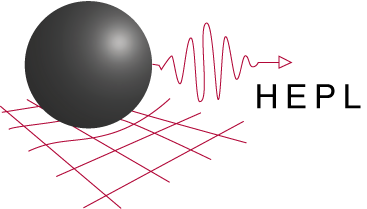News & Events
HEPL-KIPAC Seminar
Wednesday, July 1, 2009
Mac Keiser
Co-Investigator & Chief Scientist, Gravity Probe B,
Stanford
Resonance and Misalignment Torques
and Their Treatment in the GP-B Data Analysis
View Seminar Presentation Slides
Abstract: Classical torques acting on the GP-B gyroscopes decrease the accuracy in the measurement of the relativistic drift rate. Based on measurements made during the year-long science data collection, tests done following the science data collection, and a theoretical analysis of potential torques, there are two dominant classical torques acting on the gyroscopes. The first torque, known as the misalignment torque, has a magnitude proportional to the misalignment between the gyroscope spin axis and the satellite roll axis and is aligned perpendicular to the plane containing these two vectors. The second torque, known as the resonance torque, mainly produces a permanent offset in the orientation of the gyroscope spin axis when a harmonic of the gyroscope polhode frequency is in the vicinity of the satellite roll frequency. These two torques have the same physical origin: an electrostatic interaction between the patch effect fields on the surfaces of the rotor and the housing. In the post-mission data analysis, the change in the gyroscope orientation due to both of these torques can be clearly separated from the relativistic drift rate.
Bio: Mac Keiser received his Ph.D. in Atomic Physics from Duke University for a high-precision measurement of the magnetic moment of an excited state of helium. He then spent three years as a post-doctoral research associate at JILA, working on an equivalence principle experiment. At Stanford, he has worked on many different aspects of the Gravity Probe B experiment, most recently on the data analysis.
Time: 4:00pm – 5:30pm
Location: Physics and Astrophysics Conference Room 102/103
Light refreshments available 4:15pm; Presentation begiins 4:15pm.
Open to All


